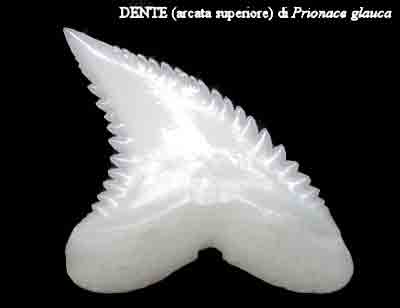Great Blue Shark's Jaws cm 29 x 27 Prionace glauca Dogfishes Cartilaginous Fishes Chondrichthyes Selachians Elasmobranchs Carcharinidae, only a piece, as in photos.
N.B.: The jawbone does not require any type of treatment, does not emit unpleasant odors, does not need disinfection, does not require pesticides, and does not need to be kept indoors. It can be hung on the wall with a simple string, wire, or other material, and a nail.
Syn. Carcharhinus macki, Carcharias aethiops, Carcharias glaucus, Carcharias gracilis, Carcharias hirundinaceus, Carcharias pugae, Carcharinus glaucus, Glyphis glaucus, Hypoprion isodus, Isurus glaucus, Prionace mackiei, Prionacea glauca, Squalus glaucus, Thalassinus rondeletii, Thalassorhinus vulpecula.
The Blue Shark (Prionace glauca (Linnaeus, 1758)) is a shark belonging to the Carcharhinidae family. Although they are generally lethargic animals, they can move around very quickly if necessary.
They often move in banks divided by size and sex and can migrate over long distances. The maximum life is unknown, but it is estimated that they can reach ages around 20 years. It was not possible to breed them in captivity.

The blue shark is an oceanic and epipelagic shark that is found all over the world in temperate and tropical waters from the surface up to depths of 350 meters. In temperate seas they approach the coast where they can be observed by divers, while in the tropics they inhabit deep waters, preferring colder temperatures. The range extends to the north as far as Norway and to the south as far as Chile. We find them off the coast of all the continents, except for Antarctica. In the Pacific Ocean, most of them inhabit the range between the twentieth and fiftieth parallel North, even though there are seasonal shifts. It was quite common in the Mediterranean Sea, especially in the Adriatic, but always very far, while today their number is decreasing.
This species is characterized by a light, slender and hydrodynamic body and elongated and narrow pectoral fins, while the others are short and pointed. The head is pointed, and the mouth is large and provided with strong triangular teeth. The back of these sharks is dark blue, lighter on the sides, while the belly is white. The largest specimens of which there are certain measurements reach 3.8 meters, however there are unverified evidences of larger specimens. A three-meter female can weigh 204 kg, the record weight ever recorded was 391 kg.
They are ovoviviparous fish and are known to give birth to even more than 100 fingerlings at a time. Courting and mating are bloody: the male repeatedly bites the female and the specimens can be divided into sexual categories based on the marks on the body. The females have adapted to this practice by developing a skin up to three times thicker than the male one.
Squids are an important prey for the verdesche, but their diet also includes cuttlefish and pelagic octopuses, as well as lobsters, prawns, crabs, a large number of bony fish, smaller sharks, carcasses of marine mammals and occasionally also sea birds. They are also known to chase fishing boat nets to catch codfish escaping from them. The blue sharks have been observed moving in groups to group the preys and to be able to capture them more easily.
The adult of blue sharks are not predated regularly, except for the man and the orcas. The younger specimens, on the other hand, can fall victim to larger sharks, such as the great white or tiger.
It is estimated that between 10 and 20 million specimens are killed each year during fishing trips. The meat is edible, but not considered particularly valuable; it is consumed fresh, dried, smoked or salted and is also used to produce fish meal. The skin is used to produce leather, the fins for shark fin soup, the liver for oil. Due to their speed and aesthetic beauty, they are sometimes hunted for playful reasons. Not to forget that the Food and Drug Administration of the United States has inserted the meat of shark, and therefore also of this species (together with that of Swordfish and some other species of pelagic predatory fish) among those that children and pregnant women should avoid to eat due to the risks associated with mercury poisoning and other heavy metals.
From 1580 to 2013, only 13 attacks were recorded on humans by this species, with 4 deaths, however many attacks (especially those that occurred at the time of castaways) may not have been adequately recorded or confused with other species.



